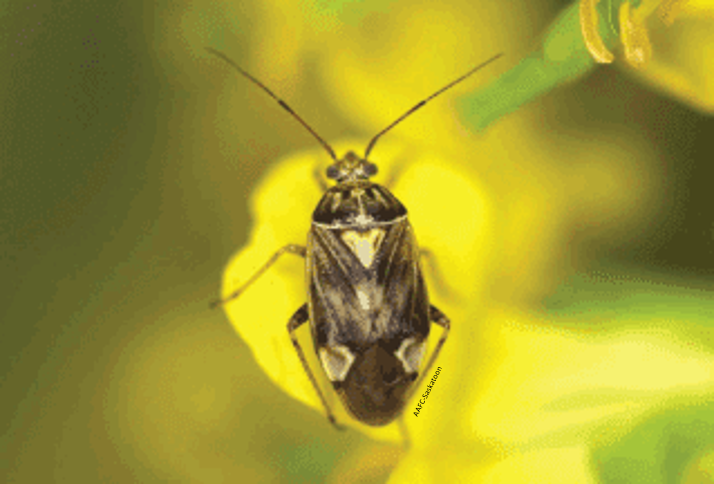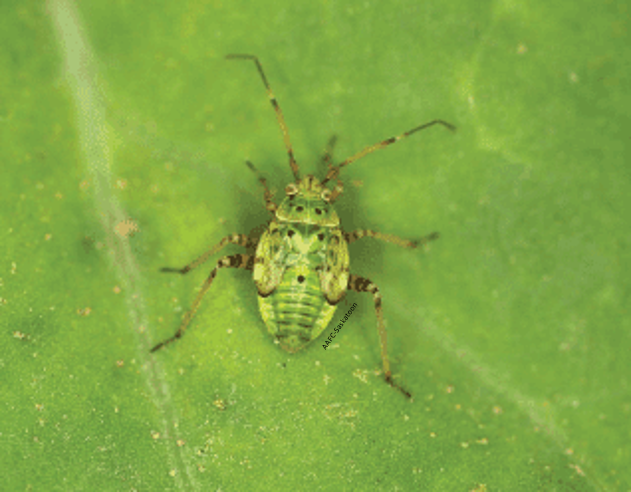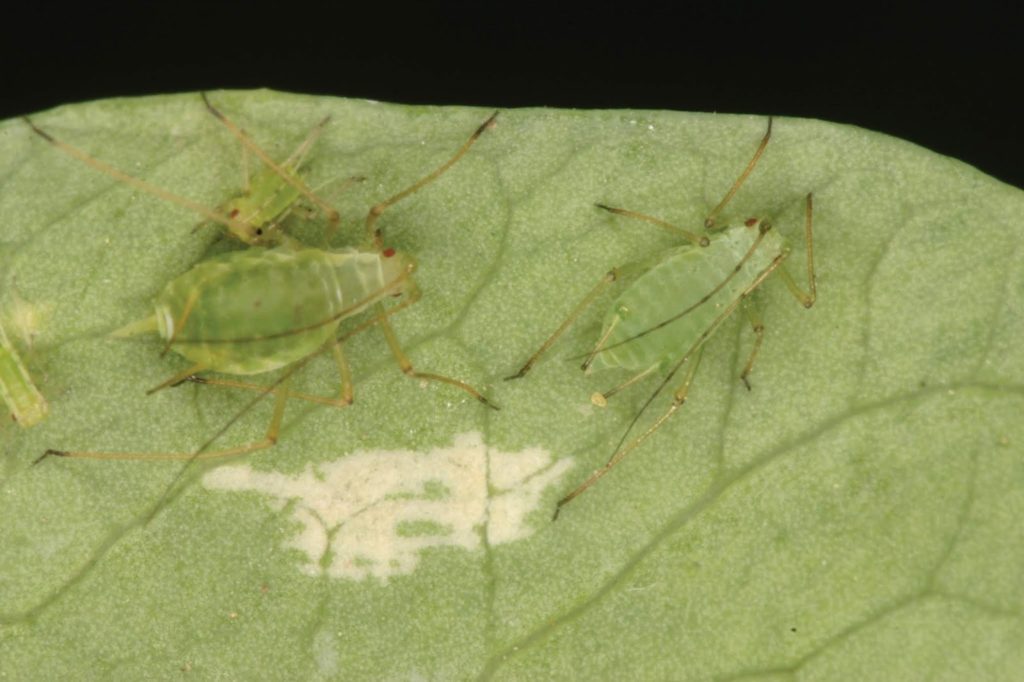On the Canadian prairies, lygus bugs (Heteroptera: Miridae) are normally a complex of several native species usually including Lygus lineolaris, L. keltoni, L. borealis, L. elisus although several more species are distributed throughout Canada. The species of Lygus forming the “complex” can vary by host plant, by region or even seasonally.
Lygus bugs are polyphagous (i.e., feed on plants belonging to several Families of plants) and multivoltine (i.e., capable of producing multiple generations per year). Both the adult (Fig. 1) and five nymphal instar stages (Fig. 2) are a sucking insect that focuses feeding activities on developing buds, pods and seeds. Adults overwinter in northern climates. The economic threshold for Lygus in canola is applied at late flower and early pod stages.
Recent research in Alberta has resulted in a revision to the thresholds recommended for the management of Lygus in canola. Under ideal growing conditions (i.e., ample moisture) a threshold of 20-30 lygus per 10 sweeps is recommended. Under dry conditions, a lower threshold may be used, however, because drought limits yield potential in canola, growers should be cautious if considering the use of foliar-applied insecticide at lygus densities below the established threshold of 20-30 per 10 sweeps. In drought-affected fields that still support near-average yield potential, a lower threshold of ~20 lygus per 10 sweeps may be appropriate for stressed canola. Even if the current value of canola remains high (e.g., >$19.00 per bu), control at densities of <10 lygus per 10 sweeps is not likely to be economical. Research indicates that lygus numbers below 10 per 10 sweeps (one per sweep) can on occasion increase yield in good growing conditions – likely through plant compensation for a small amount of feeding stress.


Damage: Lygus bugs have piercing-sucking mouthparts and physically damage the plant by puncturing the tissue and sucking plant juices. The plants also react to the toxic saliva that the insects inject when they feed. Lygus bug infestations can cause alfalfa to have short stem internodes, excessive branching, and small, distorted leaves. In canola, lygus bugs feed on buds and blossoms and cause them to drop. They also puncture seed pods and feed on the developing seeds causing them to turn brown and shrivel.
Scouting tips to keep in mind: Begin monitoring canola when it bolts and continues until seeds within the pods are firm. Since adults can move into canola from alfalfa, check lygus bug numbers in canola when nearby alfalfa crops are cut.
Sample the crop for lygus bugs on a sunny day when the temperature is above 20 °C and the crop canopy is dry. With a standard insect net (38 cm diameter), take ten 180 ° sweeps. Count the number of lygus bugs in the net. Sampling becomes more representative IF repeated at multiple spots within a field so sweep in at least 10 locations within a field to estimate the density of lygus bugs.
How to tell them apart: The 2019 Insect of the Week’s doppelganger for Wk 15 was lygus bug versus the alfalfa plant bug while Wk 16 featured lygus bug nymphs vs. aphids! Both posts include tips to discern the difference between when doing in-field scouting!
Biological and monitoring information related to Lygus in field crops is posted by the provinces of Manitoba or Alberta fact sheets or the Prairie Pest Monitoring Network’s monitoring protocol. Also refer to the Lygus pages within the “Field Crop and Forage Pests and their Natural Enemies in Western Canada: Identification and management field guide” (2018) accessible as a free downloadable PDF in either English or French on our new Field Guides page. The Canola Council of Canada’s “Canola Encyclopedia” also summarizes Lygus bugs. The Flax Council of Canada includes Lygus bugs in their Insect Pest downloadable PDF chapter plus the Saskatchewan Pulse Growers summarize Lygus bugs in faba beans.

